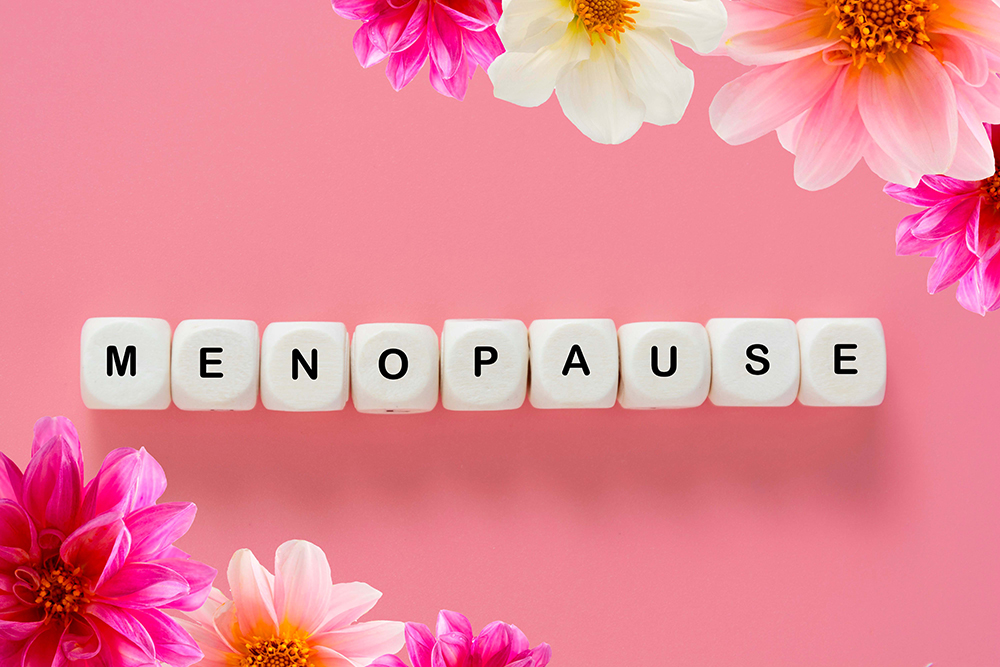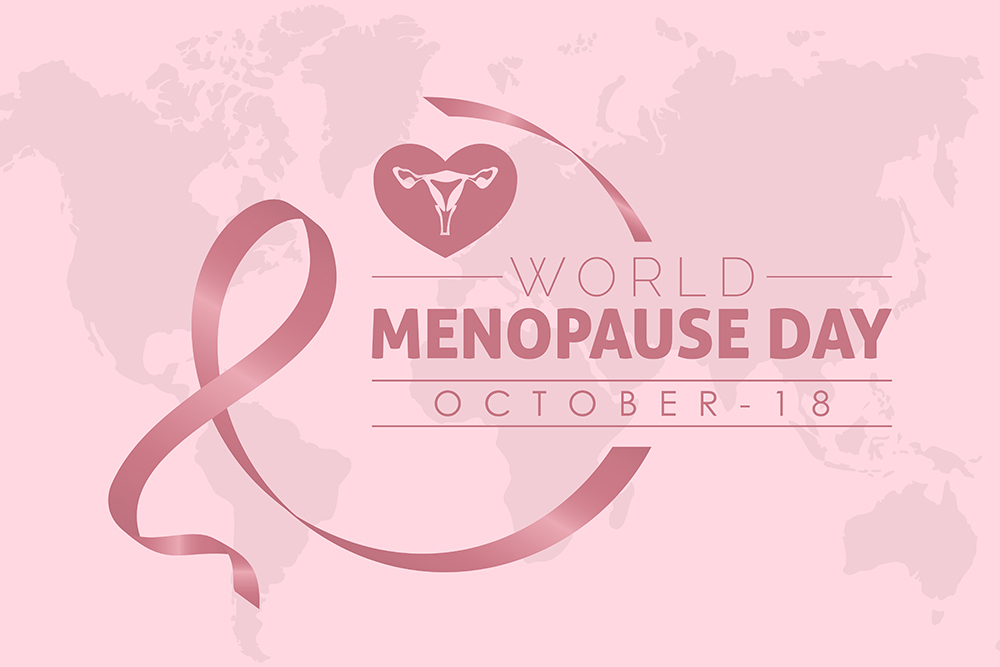Blog
Beyond Hot Flushes
It is a welcome change that the menopause is no longer a taboo subject. Afterall, although in different ways, it will affect every woman. We should also bear in mind that menopause spans 1/3 – 1/2 of a woman’s entire life. Menopause is not simply that time when periods stop. Instead menopause transition, or perimenopause, can begin 2-10 years before final menstrual period. Furthermore, about 10% of women can experience early menopause before the age of 45, and about 1% of women can experience premature menopause (or POI) before age 40. This can be either as a spontaneous event or as a side effect of a medical or surgical treatment (pelvic surgery, chemotherapy, radiotherapy etc.). Women with premature or early menopause should always have an assessment with a doctor whether they have any bothersome symptoms or not.
The many hormonal changes that occur as a woman approaches and experiences menopause transition can impact her quality of life and long term health. These symptoms often start during perimenopause and, to name just a few, include: change to period pattern, hot flushes, night sweats, change in body shape, weight gain, joint aches, sleep disturbance, brain fog, mood fluctuations, anxiety, depression, reduced libido, headaches, skin and vaginal dryness, urinary frequency and changes in pre-existing health conditions.

IMS Congress and More…

Can you tell us about the menopause conference you attended recently in Melbourne and its significance?
It has been 4 years since the previous International Menopause Society (IMS) World Congress. The IMS World Congress normally takes place every 2 years but the 2022 Congress did not take place due to Covid. That made this year’s World Congress, held in Melbourne on 19 – 22 October 2024, highly anticipated. Over 2,500 experts in women’s health and researchers from all over the world attended in person. It was quite special to be there and I am very grateful to my colleagues for the tremendous work they shared.
What are some of the key messages you took away from the conference?
One of the key message is that lifestyle factors are absolutely fundamental to our health in general, and during midlife in particular. Menopausal Hormone Therapy (MHT) is not a magic solution, but it can be very helpful when appropriate (see link to IMS publication below).
Of lifestyle factors, sleep is fundamental. Sleep difficulties during menopause transition can affect many women. We know that this can happen for a number of reasons including anxiety, hormonal changes, disordered breathing (e.g. sleep apnoea), restless legs, getting up to go to the toilet and, of course, night sweats. If a woman is having difficulty with sleep or waking up unrefreshed, she should seek medical advice.
Menopause Hormone Therapy
Menopause Hormone Therapy
Dispelling the Myths
Menopause hormone therapy (MHT), also referred to as HRT, can be an effective treatment for symptoms of perimenopause or menopause.
Some myths surrounding MHT may result in women being hesitant to consider MHT as a treatment for significant menopausal symptoms or being incorrectly denied MHT. It would be helpful to dispel some of the common myths:
Myth 1
MHT causes breast cancer.
The latest research shows that oestrogen-only MHT (may be suitable if a woman had hysterectomy) does not increase risk of breast cancer above woman’s own risk. Combined MHT of oestrogen and progesterone (the most common type of MHT) is associated with a slight increase in the incidence of breast cancer above own risk. Clinical trials show that if 1000 women aged 50-59 took MHT for 5 years, there would be 4 additional cases of breast cancer. To put this risk into perspective, if 1000 women in the same age group have 2 alcohol drinks regularly for 5 years, that alone would also result in 4 additional breast cancer diagnoses. Furthermore, in the same age group having a BMI greater than 30 increases breast cancer risk by an additional 24 cases per 1000 women, which is 6 times greater than the risk associated with MHT alone. Whereas, regular exercise reduces the risk by as much as 7 fewer cases. In short, MHT is associated with a relatively small increase in incidence of breast cancer. There are certain lifestyle factors that, if corrected, can reduce a woman’s overall risk of breast cancer.

Brain Fog

More than 60% of women struggle with brain fog during the years of menopause transition. Finding that word on the tip of your tongue, losing your train of thought, absent mindedness, difficulty concentrating, forgetfulness are some of the symptoms women experience alongside more well known symptoms such as hot flushes and night sweats. For some women, brain fog can be the main and most bothersome symptom affecting life and work.
Under the effect of hormonal shifts, the brain undergoes changes in its neurochemistry and its wiring. To reduce the impact of these, it is important to care for yourself as best you can. There are no shortcuts and fundamentals are important – good sleep, good nutrition, movement, de-stress, minimal alcohol. Some of these you can achieve yourself, for others you may need help of a health professional, based on your needs, such as a psychologist, exercise physiologist or a doctor.
Many women fear that this is a permanent cognitive decline, however for vast majority of women this is a temporary experience. Brain fog tends to get better and resolve a few years into post-menopause.
Bone Health
Bone health is not something we think about until it starts to cause us problems.
We achieve peak bone strength by the age of 30. From midlife bone strength starts to reduce and at the time of menopause the rate of decline is the greatest.
Bone strength, which reflects bone density and bone quality, is on a continuum from normal bone to osteopenia to osteoporosis.
Osteopenia is characterised by reduced bone strength. Osteoporosis is defined as low bone strength. Both of these conditions, to variable degree, predispose one to sustaining a low impact (fragility) fracture.
Contributing factors such as family history, malnutrition, early menopause, autoimmune conditions and long term steroid use can play a role in reducing bone strength.
Lifestyle measures including a wholesome diet, high in protein and calcium, vitamin D3 (if indicated), regular exercise, not smoking and minimal alcohol play important role in promoting bone health.
Estrogen, as part of hormone replacement therapy, can be used to prevent or treat osteoporosis. Non-hormonal prescribed treatments are typically used once osteoporosis is established.

Early and Premature Menopause

It is important to be aware that menopause can occur at an earlier age than the typical age of 45-55 (average age 51).
Early menopause (EM) is defined as occurring age 40-45; premature ovarian insufficiency (POI) as younger than 40. Signs can include that periods have stopped or are infrequent and / or very light, hot flushes, night sweats; there may be other symptoms of menopause. It is important to discuss with a doctor and that other causes are checked for. If EM or POI is diagnosed, then it is important to consider why it may have happened.
Either EM or POI can happen due to a number of reasons. Some of the causes may include:
- Familial predisposition
- Pelvic surgery (including removal of ovaries)
- Medical treatments such as radiotherapy or chemotherapy
- Autoimmune conditions
- Genetic conditions
- Or cause unknown
Having considered causes, it is important to decide how to manage. Lifestyle is of paramount importance and will help with long term health maintenance. Menopause hormone therapy is often indicated if there are no reasons it cannot be used. Dose and regime can vary depending on symptoms and age.
Genitourinary Syndrome of Menopause (GSM)
Genitourinary Syndrome of Menopause or GSM, is a term coined more than ten years ago, however it is still not widely known to the public. GSM is a constellation of symptoms affecting women’s bladder and genital area due to reduction in hormones during menopause transition and beyond. Many women continue to suffer in silence because they may find it embarrassing to discuss such an intimate subject even with their doctor. However GSM is worth knowing about and seeking help if needed.
Symptoms can begin in perimenopause or later, and, once started, GSM does not get better by itself without treatment. Discomfort during sex, dryness, visible changes with thinner skin and irritation as well as urinary symptoms including frequency, urgency, recurrent urine infections and weaker pelvic floor can occur in any combination.
Review with a doctor is important to assess symptoms, exclude other causes and determine the best treatment options. These include non-hormonal and hormonal local preparations; for the latter we now have great evidence of their effectiveness and benefit.

Perimenopause

Perimenopause is a time in a woman’s life when menstrual cycle is likely to start changing. Some will have shorter cycles, others may be longer and others just less regular. In terms of flow, they can be lighter, heavier or remain the same. Most women would start experiencing perimenopause in their 40s, however for some it may start in their 30s or in their 50s.
This change may be accompanied by other symptoms such as hot flushes, night sweats, joint aches, mood change or insomnia to name just a few. Furthermore, if there is past history of other conditions, either related to physical or mental health, these can to become more bothersome. For example migraines can become more intense and more frequent, blood pressure and cholesterol levels can often increase. Equally symptoms of anxiety, depression or PMS may increase.
These changes can be managed with lifestyle changes, and where required prescription medication, both in the form of hormonal or non-hormonal treatment.
Perimenopause is also a perfect time to look at what preventative steps need to be taken to optimise life-long health.
